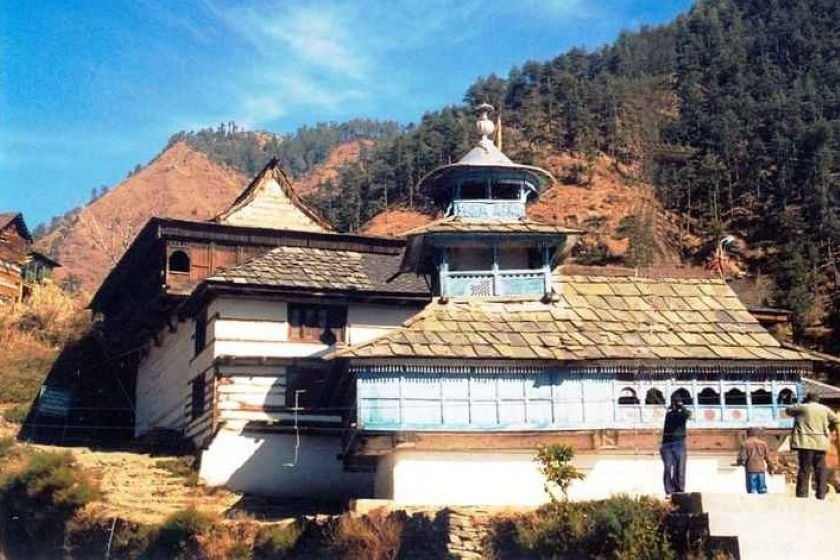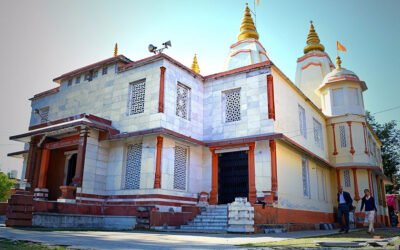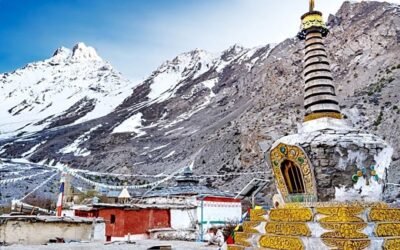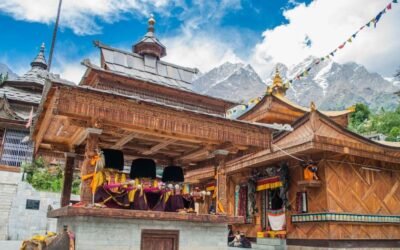Where every carving tells a tale, and Shiva listens through cedar and silence
Tucked between two mountain streams in the picturesque Chhattri village of Thunag tehsil, the Magru Mahadev Temple is a masterpiece of Himachali wooden architecture and a sacred Shaivite shrine. Revered as a wish-fulfilling deity, Magru Mahadev is worshipped as the protector of the poor and distressed, drawing pilgrims from across the Seraj and Karsog valleys.
🌄 Location & Accessibility
- Location: Chhattri Village, Thunag, Mandi District, Himachal Pradesh – 175047
- Altitude: ~2,000 meters
- By Road: 50 km from Karsog, 30 km from Janjehli, 100 km from Mandi, 160 km from Shimla
- By Rail: Joginder Nagar (~100 km) or Shimla (~160 km)
- By Air: Bhuntar Airport (~120 km) or Chandigarh Airport (~200 km)
- On Foot: A short walk from the village center through pine-covered slopes
🕉️ Deity & Worship
The temple is dedicated to Lord Shiva, worshipped here as Magru Mahadev, a benevolent and responsive form of the deity. According to local belief:
- No devotee returns empty-handed—Magru Mahadev is known to fulfill heartfelt wishes
- The temple is especially visited by those seeking relief from suffering, justice, and spiritual clarity
- Rituals include bilva leaf offerings, lighting of ghee lamps, and chanting of Shiva Stotras
The temple also hosts seasonal fairs, where folk singers, dancers, and local deities gather in celebration.
🏛️ Architecture & Artistic Marvel
The Magru Mahadev Temple is a three-tiered pagoda-style structure, blending Kath-Kuni masonry with intricate woodwork, featuring:
- Two circumambulatory paths around the sanctum
- A conical top roof covered with galvanized iron sheets over layered wooden planks
- Mandap ceiling carved into a dome, adorned with dancing figures, floral bands, and mythic scenes
- Every inch of exposed wood—from pillars to beams—is richly carved with Ramayana and Mahabharata episodes, serpents in motion, elephants, horses, and celestial beings
The temple’s original core is said to be carved from a single deodar tree, and the carvings are so dynamic that no figure appears static—a rare feat in Himalayan temple art.
📜 Mythological & Cultural Significance
- The temple is believed to date back to the 13th century, though its exact origins are lost in legend
- Local lore speaks of Magru Mahadev as a guardian of truth, and the temple is often visited for oaths, vows, and justice-seeking rituals
- The Chhattri Mela (August 15–20) is the most famous celebration, featuring folk music, devta processions, and community feasts
🎉 Festivals & Celebrations
- Chhattri Mela (August): A 5-day fair with local singers, dancers, and devta gatherings
- Mahashivratri: Celebrated with night-long bhajans and havans
- Daily Worship: Morning and evening aartis, incense offerings, and chanting of Rudram
🏞️ Nearby Attractions
- Shikari Devi Temple: A roofless Shakti shrine atop Mandi’s highest peak
- Kamrunag Temple: A sacred lake shrine of the Rain God
- Janjehli Valley: A pristine Himalayan hamlet with trekking trails
- Karsog Valley: Known for ancient temples and Pandava legends
🙏 Spiritual Experience
The Magru Mahadev Temple is not just a shrine—it is a living epic in cedar and stone, a place where Shiva listens through carvings, and the hills echo with stories of gods and mortals. As you step into its mandap, with the wooden serpents writhing above and the scent of incense in the air, you feel the presence of a god who speaks through silence and sculpture. It is a temple where art becomes prayer, and the **soul finds its story in the grain of wood.




